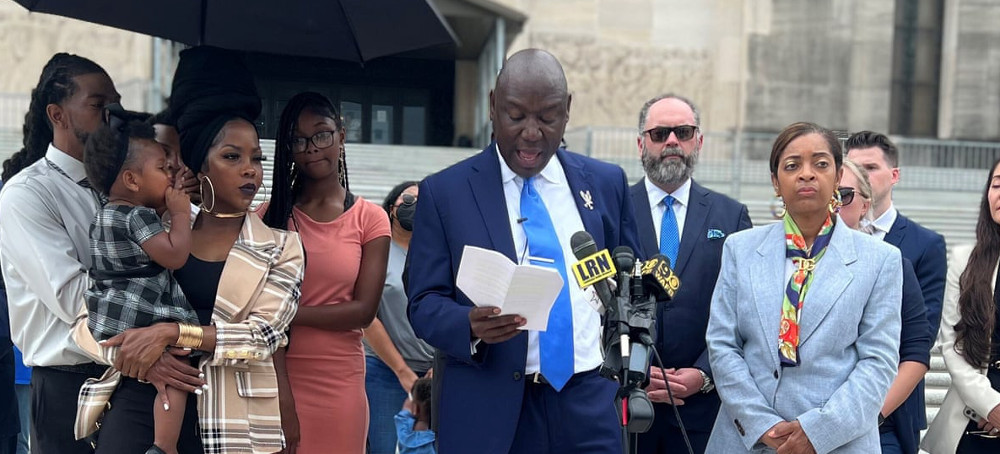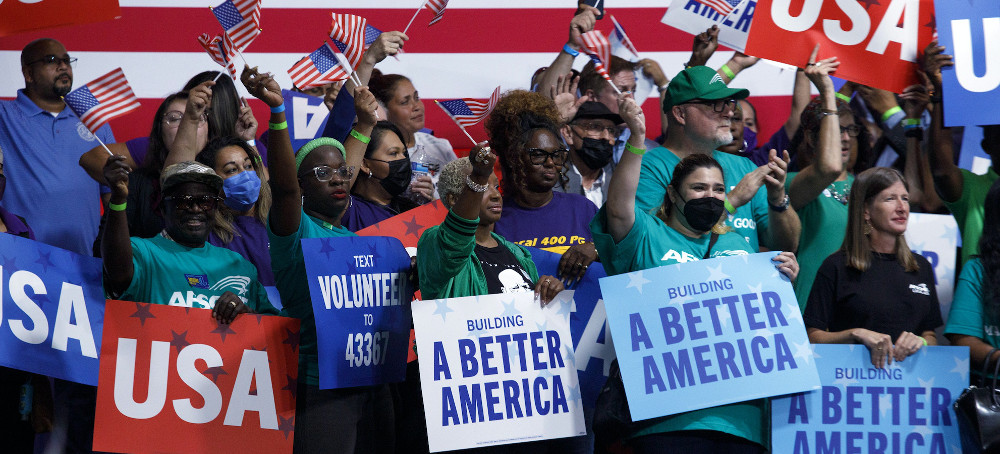RSN: Phillips Payson O'Brien | Ukraine Pulled Off a Masterstroke
Live on the homepage now!
Reader Supported News
Ukrainian leaders announced one counteroffensive against Russia—but had another in the works.
This stunning Ukrainian advance was anything but sudden. It resulted from a patient military buildup, excellent operational security, and, maybe most important, the diversion of some of the Russian army’s most powerful units from Kharkiv Oblast itself. The overall planning by the Ukrainian government and armed forces worked well on so many levels that it produced one of the greatest military-strategy successes since 1945.
Only a week ago, the most important engagement for Ukraine appeared to be the battle for Kherson. For months, President Volodymyr Zelensky, his senior aides, and other Ukrainian sources had publicly proclaimed the goal of liberating the politically and strategically important southern city and the rest of the Russian-controlled territory on the west bank of the Dnipro River. Not only did the Ukrainians discuss the upcoming campaign, but they took all the necessary preparatory steps. They used their most effective long-range weaponry, including the American-supplied High Mobility Artillery Rocket System, to destroy bridges, ammunition depots, and other targets up and down the Russian lines near Kherson. These logistical attacks suggested that the Ukrainians would focus on this area for the rest of the summer.
In response, Russian President Vladimir Putin—who seemed to agree that the city was the highest priority—did exactly what the Ukrainians hoped: He rushed forces to the area. Evidence exists that some well-armed Russian units were redeployed there from the Russian-occupied Donbas in the east.
By some criteria, Kherson was a much better place than the Donbas or Kharkiv Oblast for the Ukrainians to engage the Russians. The southern city is deeper into Ukraine and farther from the sources of Russian supplies. Supply lines into Kherson depend on only a few crossings over the Dnipro. Ukrainian strategists who want to keep wearing down the Russian army would rather see its most powerful parts in Kherson than the Donbas, which is much easier for Russia to protect by air.
On August 29, the Ukrainians stepped up their attacks around Kherson. Though they made some incremental advances at first, the battle seemed to be only a somewhat accelerated version of the attritional warfare that has been under way since April. Stories started circulating that the Ukrainians were being cautious in their plans and that U.S. officials had dissuaded them from bolder maneuvers.
Ukraine’s restraint in Kherson now looks like a tactical decision. As Ukrainian Minister of Defense Oleksii Reznikov admitted Saturday, Ukraine’s generals had been planning to launch two campaigns simultaneously. If the Kherson offensive was designed to grind down Russian forces by drawing them in and then confronting them head-on, the Kharkiv Oblast offensive had greater territorial ambitions. Ukraine hoped to retake the city of Kupyansk. The Russians were using this road-and-rail hub to get supplies to Izium, a base for their operations in the Donbas.
In retrospect, both offensives were possible only because of a ghastly summer of attritional warfare in that region. Since April the Ukrainians have suffered horrifying losses in that region but have inflicted even larger ones on the enemy. So the Russian army has been trying to hold a large and geographically unwieldy slice of Ukraine even as its own numbers decline. Ukraine, which has been conscripting soldiers since Putin started this war, has amassed an army larger than the Russian invasion force. Russian officials, meanwhile, are terrified of upsetting their populace and have avoided conscription—to the point of deploying mercenaries and sourcing soldiers from prisons and mental hospitals. So when Putin took the Ukrainians’ bait in Kherson, a shrinking Russian army moved forces away from the area that Ukraine wanted to attack and toward an area where Ukraine was waging a war of attrition.
The Ukrainians wrote a script, and the Russians played their assigned role. Unlike Kherson, where the invaders had massed forces and set up a multilayered defense, Kharkiv Oblast was thinly protected by the Russian forces. The Ukrainians were thus easily able to break Russian lines, which seem to have been held by poorly motivated and trained forces, and streak deep behind them. To give their forces the best chance to succeed, the Ukrainians also seem to have built up a substantial, fast-moving strike force. Without allowing details of their preparations to leak out—Ukrainian sources have disclosed little if any information valuable to Russia—they seem to have constructed a number of specialized combat brigades with lighter, faster wheeled vehicles. This has allowed them a crucial mobility advantage over their enemy.
Though the war is far from over and Russia can find new ways to punish Ukraine, collapsing Russian forces have not only been pushed back; in abandoning their former headquarters in Izium, they also left behind large stores of equipment and ammunition that the Ukrainians can now use against them. Even if the Russians stabilize the line in the coming days, they will be in a far worse position than they were on September 1. Building on months of careful efforts to both prepare Ukrainian forces and waste Russian ones, Ukraine has achieved a strategic masterstroke that military scholars will study for decades to come.
 The aftermath of a crash that occurred as police chased this white minivan in St. Ann, Mo., in 2017. Another motorist, Brent Cox, suffered permanently disabling injuries when the fleeing vehicle struck his car. (photo: Rana Law Group)
The aftermath of a crash that occurred as police chased this white minivan in St. Ann, Mo., in 2017. Another motorist, Brent Cox, suffered permanently disabling injuries when the fleeing vehicle struck his car. (photo: Rana Law Group)
The high cost of settlements over police misconduct has led insurers to demand police departments overhaul tactics or forgo coverage
That 2017 police chase was at the time the latest in a long line of questionable vehicle pursuits by officers of the St. Ann Police Department. Eleven people had been injured in 19 crashes during high-speed pursuits over the two prior years. Social justice activists and reporters were scrutinizing the department, and Cox and others were suing.
Undeterred, St. Ann Police Chief Aaron Jimenez stood behind the high-octane pursuits and doubled down on the department’s decades-old motto: “St. Ann will chase you until the wheels fall off.”
Then, an otherwise silent stakeholder stepped in. The St. Louis Area Insurance Trust risk pool — which provided liability coverage to the city of St. Ann and the police department — threatened to cancel coverage if the department didn’t impose restrictions on its use of police chases. City officials shopped around for alternative coverage but soon learned that costs would nearly double if they did not agree to their insurer’s demands.
Jimenez’s attitude swiftly shifted: In 2019, 18 months after the chase that left Cox permanently disabled, the chief and his 48-member department agreed to ban high-speed pursuits for traffic infractions and minor, nonviolent crimes.
“I didn’t really have a choice,” Jimenez said in an interview. “If I didn’t do it, the insurance rates were going to go way up. I was going to have to lose 10 officers to pay for it.”
Where community activists, use-of-force victims and city officials have failed to persuade police departments to change dangerous and sometimes deadly policing practices, insurers are successfully dictating changes to tactics and policies, mostly at small to medium-size departments throughout the nation.
The movement is driven by the increasingly large jury awards and settlements that cities and their insurers are paying in police use-of-force cases, especially since the 2020 deaths of Breonna Taylor and George Floyd. Those cases led to settlements of $12 million and $27 million, respectively. Insurance companies are passing the costs — and potential future costs — on to their law enforcement clients.
Larger law enforcement agencies — like the Los Angeles Sheriff’s Department or the New York Police Department — handle it in different ways, often by creating a special fund to finance settlements or by paying those costs from the county’s or city’s general fund. This insulates them from external demands by insurers.
Departments with a long history of large civil rights settlements have seen their insurance rates shoot up by 200 to 400 percent over the past three years, according to insurance industry and police experts.
Even departments with few problems are experiencing rate increases of 30 to 100 percent. Now, insurers also are telling departments that they must change the way they police.
In St. Ann, the impact has been profound.
Since the retooling, which took effect in January 2019, the number of police pursuits annually has increased slightly, but crashes during pursuits have dropped: from 25 in 2018 with eight injuries to 10 in 2021 with three injuries, according to data provided by the department. So far this year, the department says, there have been three crashes with no injuries.
The forced changes prompted Jimenez to equip his patrol cars with new technology to help nab motorists who try to outrun police. Sticky darts containing GPS trackers are shot from the front of patrol cars onto the backs of vehicles that speed away, so officers can fall back and catch up with them later.
While dozens of arrests have been made using the GPS technology, overall arrests in the city have fallen more than 30 percent since the change. Jimenez attributes that drop primarily to officers’ inability to chase motorists for minor infractions. “If you’re a proactive police department and you go out there and you search for a crime, your stats are higher because you’re fighting crime, you’re chasing more cars, you’re making more arrests,” he said.
John Chasnoff, a local activist who fought for years to get St. Ann to retool its chase policy, said he is dismayed that the catalyst for change was money — not the injuries to people including Cox.
“It’s an indictment on St. Ann police and their priorities that the voice of their insurers spoke louder than human lives,” Chasnoff said.
The insurer’s demands for St. Ann police also affected departments beyond this blue-collar town of about 13,000 people. The city is just one of a dozen in the St. Louis risk pool, which has required each city to overhaul its police pursuit policy.
There is no public data tracking how many police departments have made policy changes at the behest of their insurers. But the changes are widespread, affecting thousands of departments, according to interviews with more than two dozen insurance analysts, police reform experts and a review of hundreds of pages of insurance documents.
In Vallejo, Calif., the city’s insurance risk pool threatened in 2017 to end coverage because of mounting police use-of-force claims unless officials agreed to a higher deductible — a jump from $500,000 per claim to $2.5 million per claim. The city instead joined a high-risk insurance pool in California. Because of increased demand from troubled departments for its services, the California group has begun offering coverage nationwide. Vallejo officials did not respond to a request for comment.
Entire states are having to adjust to insurers’ demands. In New Mexico, the largest risk pool — which provides coverage for one-third of the state’s police officers — hired an instructor last year to travel the state and retrain officers in de-escalation skills after private insurance rates climbed by more than 60 percent. The risk pool that insures 30 of the state’s 33 sheriff departments also saw coverage shrink while rates shot up 50 percent over the past three years because of police use-of-force claims.
Across the country, allegations over police conduct are often settled by departments at taxpayers’ expense: A Post investigation in March documented more than $3.2 billion spent over the past decade to resolve nearly 40,000 claims at 25 of the nation’s largest police and sheriff’s departments.
Concerns about insuring troubled departments have been building for years.
In 2009, a local insurance risk pool warned the 60-officer Maywood Police Department in California that it would lose its coverage if it did not enact more than a dozen changes focused on reducing violent encounters with the public. When police failed to do so, the risk pool pulled its coverage, and the department disbanded.
“When the officers had to turn over their badges and radios for the final inspection the last day, it was the most emotional thing I’ve ever experienced in my law enforcement career,” said Frank Hauptmann, who was Maywood police chief at the time. “When we did our final salute, each officer had tears streaming down their faces.”
For some police departments, insurers are refusing even to provide initial coverage unless they change their policies on a variety of matters including body cameras and chokeholds, according to industry experts.
“I’ve been doing this for 40 years, and this represents a major shift,” said John Chino, a broker who secures insurance for cities and counties in six states. “They are asking lots of very detailed questions. ‘Do they use chokeholds? What does their de-escalation training look like?’ If they aren’t doing something on the list, they are required to get it if they want coverage.”
 Nancy Davis, holding her daughter, left, called on the state’s lawmakers to at least clarify the wording of their abortion ban – if not repeal it entirely. (photo: Stephen Smith/AP)
Nancy Davis, holding her daughter, left, called on the state’s lawmakers to at least clarify the wording of their abortion ban – if not repeal it entirely. (photo: Stephen Smith/AP)
Nancy Davis suffered ‘unspeakable pain’ due to poorly worded law that meant hospital in home state refused to terminate pregnancy
Nancy Davis, 36, told the Guardian that she had her pregnancy terminated on 1 September after traveling from her home town of Baton Rouge to a clinic in Manhattan whose staff had agreed to complete the procedure.
Davis’s trek was necessary because Louisiana has outlawed abortion with very few exceptions after the US supreme court’s decision in June to eliminate federal abortion rights which were established by its 1973 Roe v Wade ruling. New York is among the states where abortion remains legal.
Davis was about 10 weeks pregnant in late July when an ultrasound at Woman’s hospital in Baton Rouge, Louisiana’s capital, showed that her fetus was missing the top of its skull, a rare but fatal condition known as acrania that kills babies within days – and sometimes minutes – of birth.
Louisiana’s abortion ban contains a general exception for fetuses that cannot survive outside their mothers’ wombs, and the law’s author – state senator Katrina Jackson – has insisted that Davis could have legally obtained an abortion without having to go across the country.
But Louisiana’s list of conditions justifying an exception from the state’s abortion ban did not explicitly include acrania. So officials at the hospital where Davis had her ultrasound refused to provide an abortion for her, apparently fearing that they could be exposed to prison time, fines and forfeiture of their licenses to practice if they performed the procedure.
“Basically … I [would have] to carry my baby to bury my baby,” Davis has previously said.
After Davis spoke out in the media about her ordeal, more than a thousand people donated nearly $40,000 to an online GoFundMe campaign for Davis to travel to a state where it was certain that she could legally get an abortion. She had initially planned to go to North Carolina, but during a brief telephone conversation on Tuesday, she said she ended up going to a Planned Parenthood facility in Manhattan.
Davis is only one member of a group of women or girls who have been forced to take gut-wrenching actions in the aftermath of the elimination of nationwide abortion rights.
A Florida court recently blocked a pregnant 16-year-old girl from having an abortion, deeming her too immature to decide whether she should have an abortion and instead requiring the teenager to give birth to a baby.
Meanwhile, earlier in the summer, a 10-year-old Ohio girl who was raped and impregnated had to travel to neighboring Indiana to terminate her pregnancy because her state had banned most abortions.
Most abortions are set to become illegal in Indiana as of Thursday, too.
Davis appeared outside Louisiana’s capitol building in late August alongside the civil rights attorney Ben Crump and called on the state’s lawmakers to at least clarify the wording of their abortion ban – if not repeal it entirely – so that no one else would have to endure what she has.
Crump said Davis – who is raising a daughter and two stepchildren with her partner – suffered “unspeakable pain, emotional damage and physical risk” because of the poorly worded law. Lawmakers, Crump added, “replaced care with confusion, privacy with politics and options with ideology”.
For her part, Davis said: “This [was] not fair to me. And it should not happen to any other woman.”
 A truck arrives at the Amazon warehouse in Staten Island, N.Y., which became the company's first unionized U.S. facility in the spring. (photo: Eduardo Munoz Avarez/AP)
A truck arrives at the Amazon warehouse in Staten Island, N.Y., which became the company's first unionized U.S. facility in the spring. (photo: Eduardo Munoz Avarez/AP)
While Amazon pursues legal challenges to that historic union win, federal labor officials on Wednesday approved the election at the warehouse known as ALB1.
In mid-October, 400 workers there will vote on whether to join the upstart Amazon Labor Union, the same independent group that unionized more than 8,000 at the massive Staten Island warehouse. It's run by current and former Amazon workers, and led by a man whom Amazon fired after he led a pandemic-era walkout.
Other unionization efforts have not been successful. In the spring, workers at a smaller Staten Island warehouse voted against joining the ALU. And unionization efforts have failed so far at an Amazon warehouse in Alabama.
At the Albany-area warehouse, Amazon workers will vote on Oct. 12, 13, 15 and 17 in a tent in the facility's parking lot. The NLRB will tally the ballots on Oct. 18.
Amazon, meanwhile, continues to question whether union organizers gathered enough "legitimate signatures" to warrant the election. Rules require organizers to submit signatures from 30% of the workers they seek to represent. Federal labor officials had assessed this before ruling to schedule a vote.
"We've always said that we want our employees to have their voices heard, and we hope and expect this process allows for that," Amazon spokesperson Paul Flaningan said in a statement.
Amazon earlier this month lost a key battle in its attempt to reverse the union's victory in Staten Island. A National Labor Relations Board official recommended that Amazon's objections be rejected in full and that the union be certified.
A formal NLRB decision on the matter is expected in the coming days, potentially requiring Amazon to begin contract negotiations with the union.
 Attendees during a rally for the Democratic National Committee in Rockville, Md., on Aug. 25, 2022. (photo: Anna Rose Layden/Getty)
Attendees during a rally for the Democratic National Committee in Rockville, Md., on Aug. 25, 2022. (photo: Anna Rose Layden/Getty)
The new language requires the smaller committee to ratify any changes that its broader membership at the national convention wants to adopt.
The national committee approved language requiring that it must ratify any bylaw amendments that the convention, a broader body, wants to adopt. “No such Bylaw or amendment shall be effective unless and until it is subsequently ratified by a vote of the majority of the entire membership of the Democratic National Committee,” the amended measure from the Rules and Bylaws Committee states.
“These decisions are made to move ultimate power from the members of the convention into the hands of the committee, and that can become a dangerous precedent,” Nevada Democratic Party Chair Judith Whitmer told The Intercept. “These seem to us as increasingly anti-democratic decisions. And it brought a lot of outrage from progressives and moderates alike.”
The amendment removes the authority over DNC decisions from the national convention, which includes thousands of members, and places it instead with the smaller national committee of just under 500. According to three people present, several DNC members were frustrated with the change.
“We’re hearing that a very small group may try to disrupt the General Session,” read a text a DNC staffer sent to members on Friday. “We cannot afford this disruption less than 60 days before the election (also, it could prevent the VP from being able to speak tomorrow). We recommend you enthusiastically vote to support the reports as written and adopted overwhelmingly by your colleagues on standing committees. Wondering if we can’t count on you to support the chair and reports?”
The following day, when the general session took place, Democratic National Committee Member Jessica Chambers of Wyoming — who received the text and is among the leaders who will now have the power to approve bylaws — read the message aloud on the floor. Chambers said the text went to at least 100 individual members.
“There is not a disruptor among us,” Chambers said to a round of applause. “Our staff should not be telling us how to think or vote.” The Intercept reviewed an audio recording of her remarks during the session.
Chambers called the DNC “the least democratic organization that I’m involved with,” in part because paid staff whip votes against members. The recent attempt to suppress dissent is an example of how committee staff undermine elected members “for someone else’s agenda,” she added. “And I don’t know whose agenda it really is.”
Whitmer, who did not receive the text herself but had it shared with her by a fellow member, called the message an “intimidation tactic” that created division within DNC membership.
Two press representatives for the DNC did not respond to The Intercept’s request for comment, nor did Rules and Bylaws Committee co-chairs Minyon Moore and James Roosevelt Jr. Moore is the former chief executive officer of the DNC and was the director of White House political affairs under President Bill Clinton; Roosevelt has provided volunteer legal counsel to the Massachusetts Democratic Party and is a former associate commissioner of the U.S. Social Security Administration.
“The DNC members are at a very clear disadvantage to the staff and the interests of the establishment,” Chambers said. “I hate that word, but I don’t know how to describe it. There are people who are running the DNC that are not the DNC members.”
 Children work in the polluted hazardous areas of Chittagong's waste dump in Bangladesh, May 30, 2022. (photo: Mohammad Shajahan/Getty)
Children work in the polluted hazardous areas of Chittagong's waste dump in Bangladesh, May 30, 2022. (photo: Mohammad Shajahan/Getty)
An estimated 50 million people worldwide are believed to be victims of forced marriage and forced labor -- up 25% from the last estimate in 2016 -- according to a new report published Monday by the International Labour Organization (ILO), Walk Free and the International Organisation for Migration.
Modern slavery refers to forced labor and forced marriage, when someone cannot refuse to comply or escape owing to threats, violence and deception. The researchers conducted a series of surveys across more than 180 countries to come up with their results.
According to the report, Covid-19, armed conflicts, and the climate crisis caused "unprecedented disruption" to employment and education, leading to an increase in poverty, unsafe migration and gender-based violence -- all risks for modern day slavery.
But ILO's director general, Guy Ryder, said "nothing can justify the persistence of this fundamental abuse of human rights."
"We know what needs to be done, and we know it can be done. Effective national policies and regulation are fundamental. But governments cannot do this alone," he said.
The report says better laws, stronger legal protections and greater support for women, girls and vulnerable people could significantly reduce or one day end modern slavery.
Women and girls vulnerable
An estimated 22 million people are living in a marriage they had been forced into, the report said -- a 43% increase from 2016 figures.
More than two thirds of those forced to marry are women and girls, according to the report, putting them at greater risk of sexual exploitation and violence.
More people in Asia and the Pacific were in forced marriages, but when population size was taken to account, researchers found that forced marriage was more prevalent in Arab states.
Covid-19 has "exacerbated the underlying drivers of all forms of modern day slavery, including forced marriage," the report said.
In some countries, lockdowns prevented daily wage workers from earning money, and with schools shut some families sent their children to work to help put food on the table.
India's capital Delhi experienced one of the world's longest school lockdowns because of the pandemic, forcing more than 4 million children out of the classroom for more than 600 days.
About 10% of children in the city's government schools dropped out of education because of the pandemic and its economic impact on poorer families, according to Shaheen Mistri, founder of non-profit organization Teach For India.
"Child marriage has gone up, violence against children has gone up, nutrition is a huge issue as many of our children depend on school meals," Mistri told CNN in January.
And the data published in Monday's report likely does not show the whole picture.
"As the data only partially reflect the effects of the Covid-19 pandemic, the estimates presented in this report are likely to understate the full magnitude of the pandemic's impact," it said.
Children and forced labor
Forced labor has increased by 11% to 28 million people since 2016, according to the report -- and almost one in eight are children, giving the issue "special urgency," the report said.
More than half of the children are in commercial sexual exploitation, which involves trafficking crimes where the primary form of forced labor is in sexual services, it added.
"Qualitative reports indicate that children can be subjected to severe forms of coercion and abuse, including abduction, drugging, being held in captivity, deception and manipulation of debt," according to the report. "Some of the worst abuses occur in situations of armed conflict."
About 86% of cases of forced labor are found in private sector industries, including manufacturing, construction and agriculture, with Asia and the Pacific home to more than half of the global total, according to the report.
Research showed differences between genders when it came to forced labor, including the industries that employ them and the nature of the coercion.
Women forced into labor are much more likely than men to perform domestic work, while men are likely to be in the construction sector, the report said.
While women are more likely to be coerced into forced labor through abuse and non payment, men are more likely to receive violent threats and financial penalties, it added.
 Deforestation in a boreal forest in Canada. (photo: Getty)
Deforestation in a boreal forest in Canada. (photo: Getty)
In the new scorecard, the NRDC notes that major companies, including P…G, Kimberly-Clark and Georgia-Pacific have received F scores for top brands such as Angel Soft, Charmin, Cottonelle and Quilted Northern. These companies are sourcing virgin forest fibers from primary boreal forests for their toilet tissue products. Other retailers, including Aldi, Lowe’s, Home Depot and Walmart, also received F scores for their toilet paper.
Scores were based on factors including percentage of recycled content, percentage of virgin fibers, FSC certification, the bleaching process, and for products made with virgin fibers or non-FSC bamboo, the judges determined whether or not the fibers were sourced from primary forests.
While many of the 60 toilet paper products surveyed received Fs, there were an increasing number of products earning higher markings with more sustainable options for consumers. Twelve products received A or A+ scores.
Some of the top marks went to Trader Joe’s, Green Forest and Natural Value. H-E-B’s Field and Future toilet paper, Kroger’s Simple Truth toilet paper, Target’s Everspring toilet paper and Seventh Generation Extra Soft … Strong toilet paper were among those earning A scores.
In total, the report evaluated 142 products, including toilet paper, paper towels and facial tissues. Seventeen products in total received A+ marks, and another 17 received As.
“Industry laggards like P…G are fueling a tree-to-toilet pipeline that is flushing away some of the most environmentally important — and threatened — forests in the world,” said Jennifer Skene, NRDC’s Natural Climate Solutions policy manager, as reported by CleanTechnica. “The primary forests of the boreal — those areas that have never before been industrially disturbed — must be protected if we’re going to have a chance of avoiding catastrophic climate change. Turning them into toilet paper is a climate crime, especially when done by the very companies that most need to step up to protect our future.”
While some major companies, including Kimberly-Clark and Georgia-Pacific, have recently released toilet paper products made with recycled materials that have earned B+ ratings, there is more work to be done. P…G is testing a bamboo toilet paper for its Charmin brand, but it has yet to commit to scaling up the product for more sales or sharing a long-term strategy for more sustainable forest fiber sourcing.
“P…G’s Charmin brand has become a relic that’s completely misaligned with the urgency of the climate crisis we face,” Ashley Jordan, NRDC’s boreal corporate Campaign Coordinator, said. “Newer toilet paper companies are investing in products that provide healthy options for consumers and the planet. P…G, a $350 billion corporation, has the potential to show real leadership by making Charmin planet-safe. Our forests and our future depends on it.”
Follow us on facebook and twitter!
PO Box 2043 / Citrus Heights, CA 95611


Comments
Post a Comment